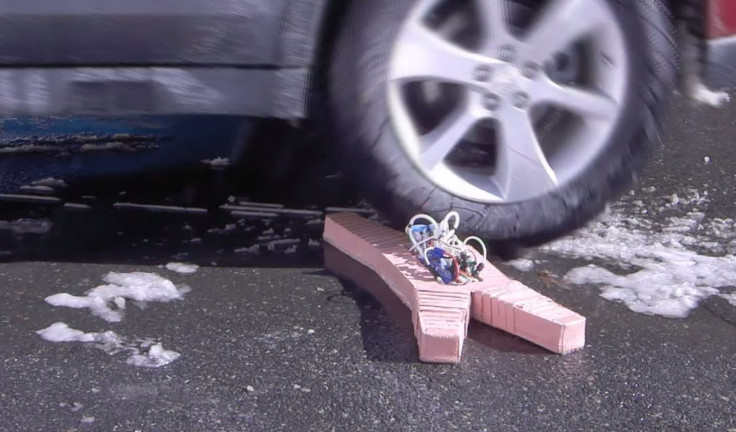Shape-Changing Robot Heralds Major Advance in Soft Robotics

Engineers have created a shape-changing "soft" robot that is capable of operating in extreme conditions which usually hinder traditional robots.
Researchers from Cornell and Harvard Universities published details of the robot in the upcoming edition of journal Soft Robotics in a paper titled 'A Resilient, Untethered Soft Robot'.
The project establishes a significant step forward in the nascent field of soft robotics, a new sub-category that ditches rigid parts used in traditional robots in order to deal with uncertain and changing tasks and environments, such as moving over rough terrain.
The robot's design improves upon earlier soft robot designs as it is the first fully untethered machine that does not need to be attached to an air compressor to work - meaning its use is not restricted to the laboratory.
"This paper marks the emergence of soft robot technology from the research lab into the real world," said Barry Trimmer, editor-in-chief of Soft Robotics.
The research was part-funded by the Defence Advanced Research Projects Agency (DARPA), a US government agency that develops new technologies often used in the military.
The paper describes a "pneumatically powered, fully untethered mobile soft robot" made of silicone and consisting of hollow glass spheres, air compressors, and a battery.
"The soft robot is safe to interact with during operations, and its silicone body is innately resilient to a variety of adverse environmental conditions," the paper reads.
"(These include) snow, puddles of water, direct exposure to flames, and the crushing force of being run over by an automobile."
The engineers hope to improve on the robot's design in the future by better protecting the remaining rigid components, that currently remain exposed at the robot's core. They also hope to increase the locomotion speed of the robot, which is limited by the flow rate of air into the pneumatic pumps.
© Copyright IBTimes 2025. All rights reserved.






















